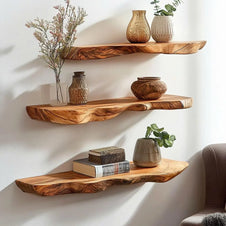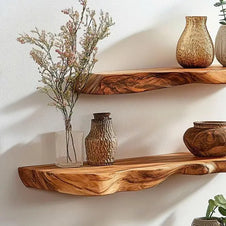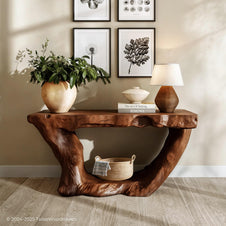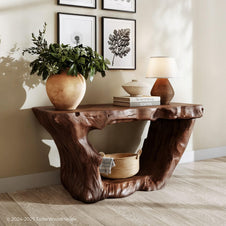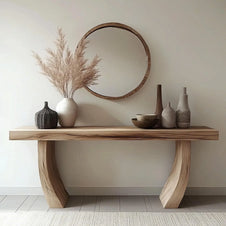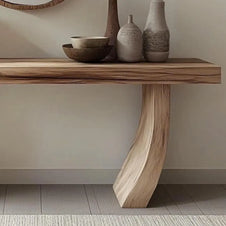Floating shelves offer an unparalleled aesthetic of clean lines and minimalist design, making the shelving appear as though it effortlessly emerges directly from the wall.
This sleek, hardware-free look is the primary reason homeowners and decorators are increasingly interested in learning how to install floating shelves without brackets.
Tools & Materials You’ll Need
Successfully learning how to install floating shelves without brackets requires careful planning and the use of the correct tools and materials. Understanding the nuances of each item will significantly improve the stability and appearance of the outcome.
1. Essential Tools
The foundation of any successful shelving installation lies in precise measurement and secure fastening. Do not underestimate the importance of quality tools when executing a clean, bracket-free look.
|
Tool
|
Purpose & Detailed Usage
|
|
Drill/Driver
|
Used for drilling pilot holes and driving screws/anchors into studs, wood, or masonry.
|
|
Studs Finder
|
Essential for locating wall studs (wood/metal) to ensure maximum stability and weight capacity for the hidden supports.
|
|
Level
|
Crucial for marking a perfectly horizontal line to prevent the shelf from appearing crooked. Re-check marks before drilling.
|
|
Tape Measure & Pencil
|
Used for precise measurement and transfer of hidden cleat/rod mounting points from the shelf to the wall.
|
|
Anchors
|
Heavy-duty anchors (toggle/molly bolts) are used when studs are unavailable to distribute the shelf's weight across the drywall.
|
2. Material Options
The choice of shelf material is critical, as it directly determines the hidden support structure needed for stability and load bearing.
These are heavy and durable, demanding robust hidden supports, such as heavy-duty steel rods (pins) or a deeply recessed wooden cleat.
For maximum load optimization, securing these support mechanisms directly into wall studs is crucial when planning how to install floating shelves without brackets.
Steel rods offer a truly invisible mount but require extreme precision in drilling, while wooden cleats provide a strong, reliable alternative where the shelf slides over the mounted wood piece.
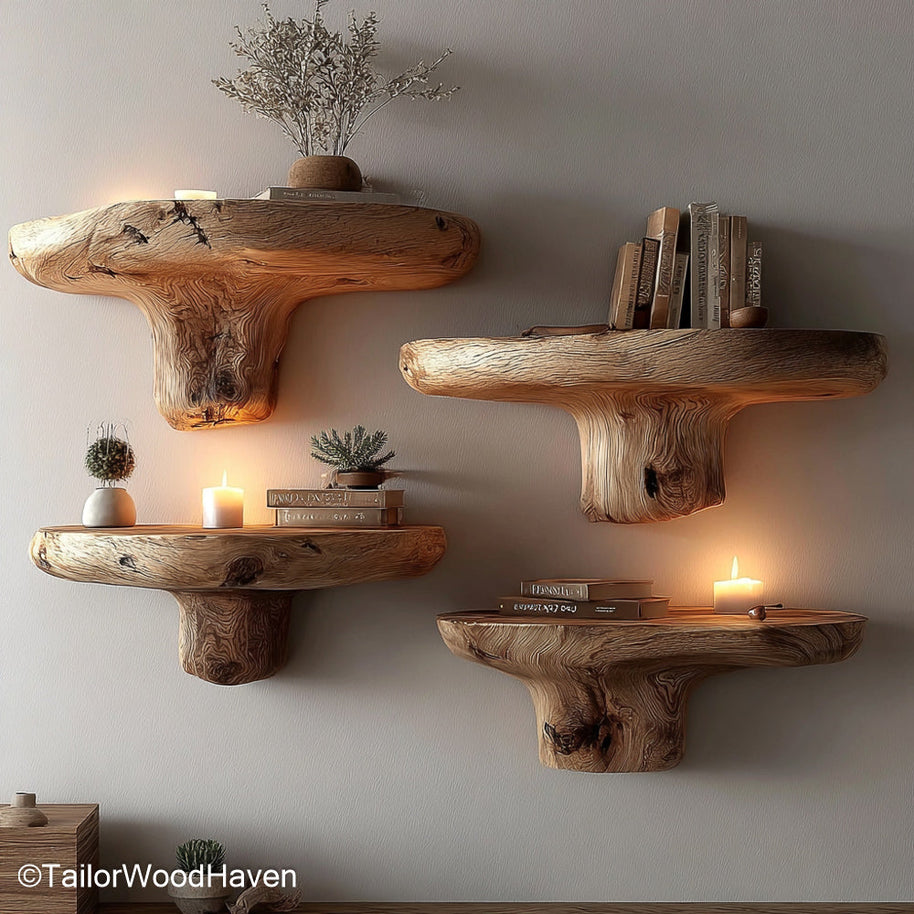
This shelf clearly displays the robust hidden brackets and mounting hardware, assuring customers of a secure and professional installation for solid wood shelves.
These lighter-weight shelves are typically easier to handle and install, often featuring a specialized cleat designed to fit snugly inside the shelf’s hollow cavity.
This simpler system is ideal for those learning how to install floating shelves without brackets for the first time.
Mastering the appropriate support system - be it for solid or hollow construction - is the key to reliably figuring out how to install floating shelves without brackets.
Moreover, you might find the principles outlined in tutorials like Easy DIY Floating Shelf Tutorial – Dani Koch helpful for constructing a torsion box shelf optimized for hidden supports.
Step-by-Step Guide
Mastering how to install floating shelves without brackets relies on precision, preparation, and selecting the right hidden mounting system.
1. Prepping the Wall
Preparation is key to a flawless result. Mark the desired height, use a stud finder to locate wall studs, and draw a perfectly horizontal reference line with a level.
Crucially, securing your hidden support system (cleat or steel rods) directly into these studs is the single most important factor when figuring out how to install floating shelves without brackets that can reliably support significant weight.
Finally, hold the shelf against the wall and precisely transfer the mounting points from the shelf's back onto the wall reference line.
2. Installing with Hidden Cleats for Structural Support
The recessed wooden cleat is the most robust technique for structural, bracket-free shelving.
Align the wooden cleat with your level line. Drive long, structural screws deep into the marked stud centers until the cleat is rigid.
If studs are unavailable, use heavy-duty mechanical anchors (toggle or molly bolts). When considering how to install floating shelves without brackets for heavier items, always check and choose anchors with the highest weight rating.
Slide the hollow shelf body over the mounted cleat. Lock the shelf into place by driving small finish screws up through the bottom of the shelf and into the hidden cleat.
This provides a perfect and sturdy answer to how to install floating shelves without brackets while maximizing long-term stability.
3. Mounting Without Nails/Drilling (Renter-Friendly)
For very lightweight decorative items or rentals, non-structural methods offer aesthetic solutions on how to install floating shelves without brackets.
Use heavy-duty interlocking strips. Clean the wall and shelf contact points, apply the strips, press firmly, and allow the adhesive to cure for 24 hours before loading.
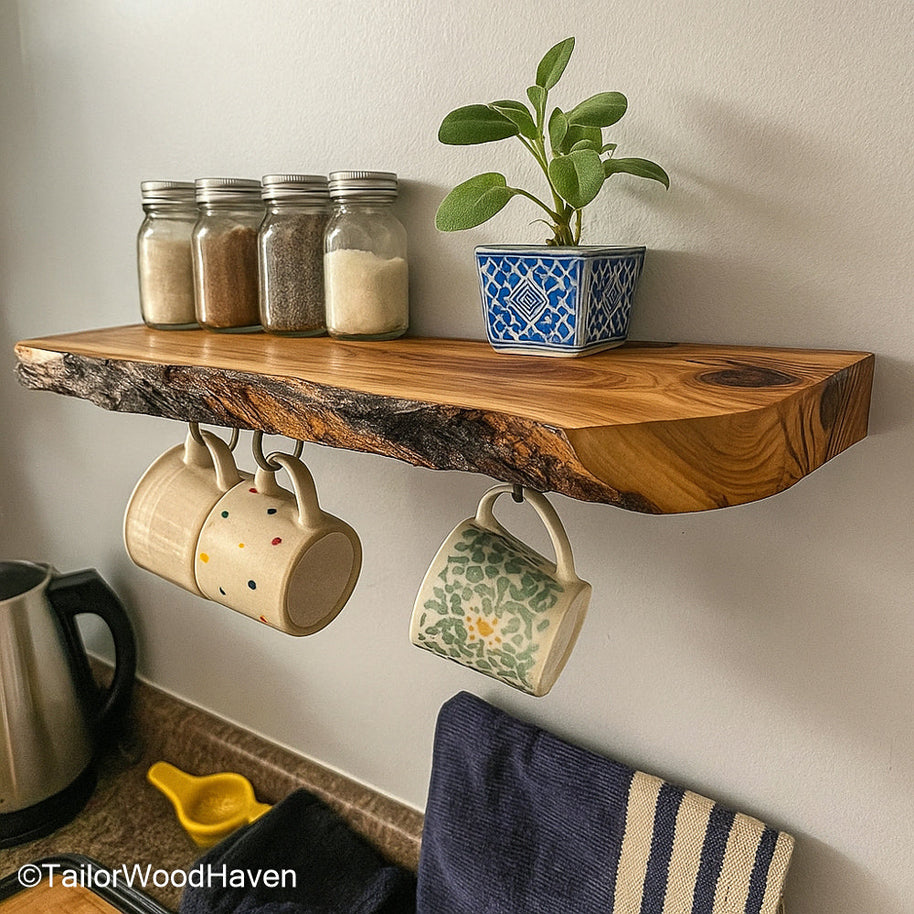
These durable, sealed wooden shelves offer convenient and stylish open storage for essential kitchen items like spices, jars, and decorative pieces.
Ideal for utility purposes inside small alcoves or closets.
A spring-loaded tension rod is secured between opposing vertical walls, and the shelf rests upon it, requiring no drilling.
This is the simplest technique to determine how to install floating shelves without brackets for light utility purposes. For further reading on temporary, no-drill methods, check out: No-Drill Shelves for Renters.
Common Questions Answered
Many homeowners express hesitation about taking on the project of how to install floating shelves without brackets, fearing a complex or fragile result. Addressing common concerns demystifies the process.
1. Are floating shelves a hassle to install?
Floating shelves are generally not a hassle, but they demand high precision during the initial setup. The difficulty doesn't lie in the complexity of the hardware, but in the small tolerance for error.
Compared to traditional shelving with visible L-brackets, a single hidden cleat system is often simpler.
However, the crucial difference is that measurement and stud-finding must be flawless, as the shelf must align perfectly with the hidden support.
Rushing the measuring phase is the only factor that makes the job frustrating. Once the support is rigidly mounted, securing the shelf is fast.
Understanding the proper technique for how to install floating shelves without brackets turns the installation into a rewarding, precise project rather than a chore.
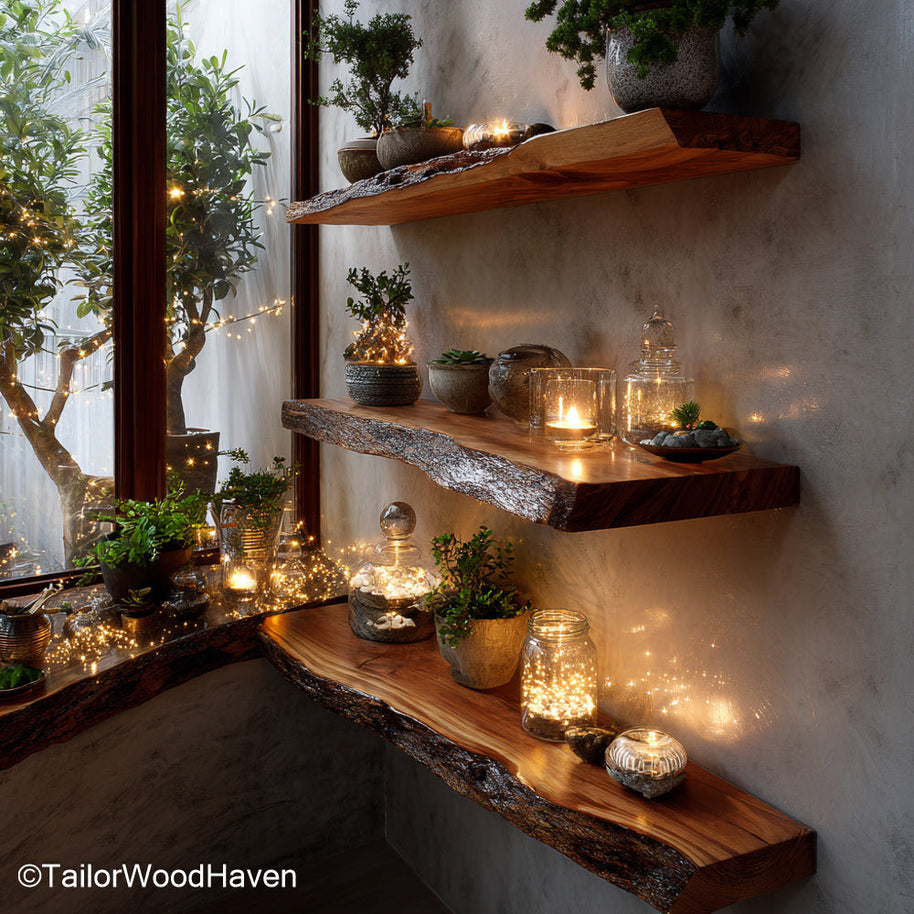
Built from solid walnut with a deep, smooth finish, these shelves are an ideal, luxurious choice for modern bedrooms, libraries, or upscale kitchen designs.
2. How to hang floating shelves without studs?
It is absolutely possible to hang floating shelves without hitting a stud, but it requires using high-quality specialized wall anchors and accepting a lower overall weight capacity.
When attempting how to install floating shelves without brackets in drywall without studs, always choose mechanical anchors over simple plastic plugs.
|
Anchor Type
|
Max Weight in Drywall (Approx.)
|
Best Use Case
|
|
Toggle Bolts
|
100-150 lbs/bolt
|
|
|
Molly Bolts
|
50-75 lbs/bolt
|
-
Medium-weight decor, spices, or toiletries
-
Easier to remove than toggles
|
|
Self-Drilling Anchors
|
25-40 lbs/anchor
|
|
If your hidden cleats or rods are mounted using four or more heavy-duty toggle bolts, the weight capacity will be more than sufficient for general household items. This flexibility shows you can still master how to install floating shelves without brackets even in less-than-ideal wall conditions.
3. Can renters install floating shelves?
Renters can indeed install floating shelves, though they should stick to the non-damaging methods.
The core restriction for a renter learning how to install floating shelves without brackets is the prohibition against structural damage or large holes.
For very lightweight decorative items (less than 10 lbs), the heavy-duty adhesive strip method is ideal. It leaves no damage and simply peels off upon move-out.
Using spring-loaded tension rods inside cabinets or small alcoves requires no drilling whatsoever and is fully reversible.
If a renter wishes to use a more permanent, heavy-duty hidden cleat system, the best approach is to negotiate with the landlord.
Offering to install professional-grade, invisible shelving that actually improves the look and utility of the space can sometimes gain permission, especially if the renter commits to filling and patching the few small holes upon departure.
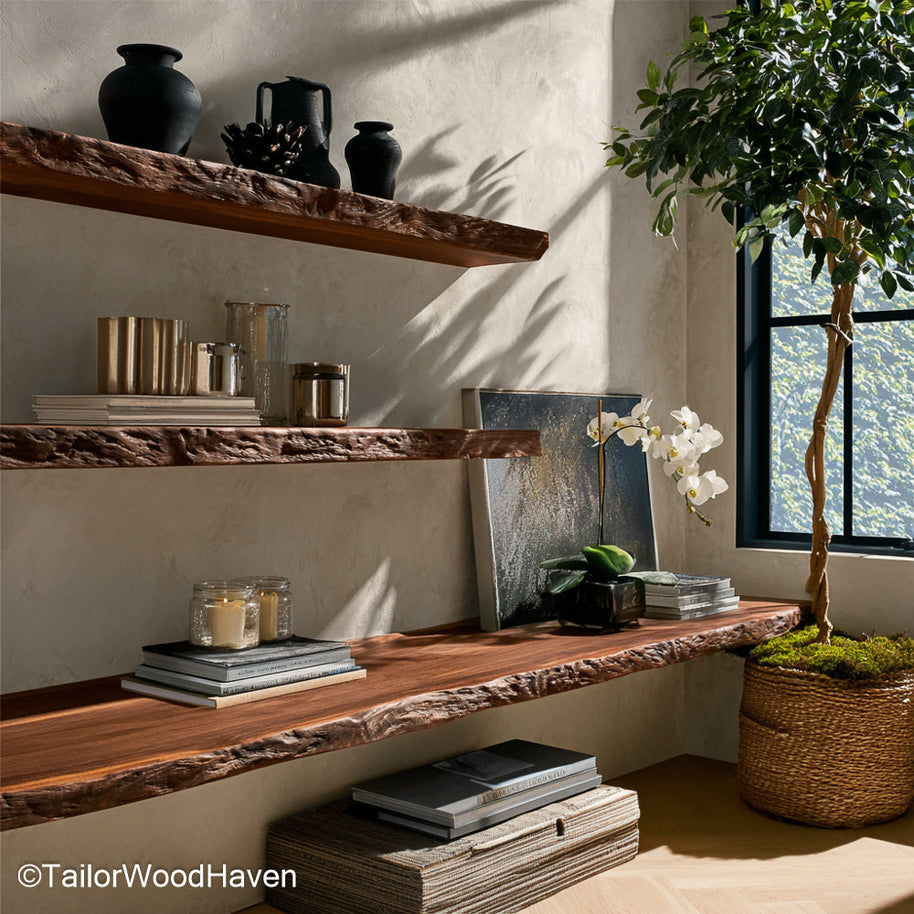
Showcasing solid walnut slabs with a rich, natural grain and hidden mounts, these shelves provide a stylish and organic look for open storage throughout the home.
4. Keep Weight Limits in Mind
The biggest maintenance tip for bracket-free shelves is strict adherence to the weight limits established during installation.
Always spread the load evenly across the shelf length. Placing all the weight on one end, even if under the maximum limit, creates rotational stress on the hidden cleat or rods, leading to eventual sag or failure.
For very heavy items (like a row of hardback books), try to place them directly over the points where the hidden cleat is screwed into a wall stud. This ensures the weight is transferred directly to the most secure structural element.
Periodically check the shelf by gently lifting it. If you notice any give, wobble, or a small gap appearing between the shelf and the wall, immediately remove the heavy items and tighten the connection screws. This preventative measure will extend the life of your installation after you have figured out how to install floating shelves without brackets.
The successful implementation of how to install floating shelves without brackets hinges on respecting the load limits of the chosen mounting system - be it a heavy-duty toggle bolt or a standard wooden cleat system.
Conclusion
The journey to learning how to install floating shelves without brackets culminates in a sleek, professional-looking storage solution that immediately upgrades any room’s decor. By opting for hidden cleat or rod systems, you eliminate bulky hardware, achieve a clean, streamlined look, and gain the pride of having executed a complex DIY task with precision.

